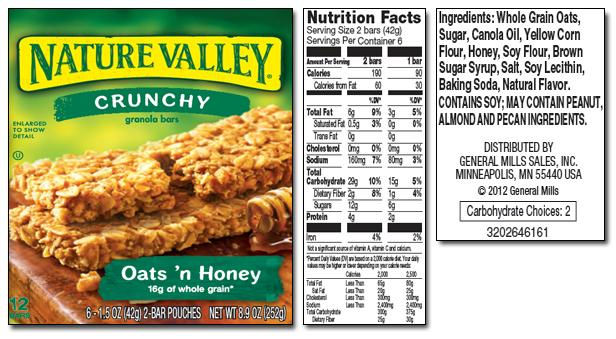How to read food labels: an essential life skill
- Sophia Smith

- Feb 23, 2020
- 3 min read
Updated: Feb 24, 2020

Reading food labels can be tricky
Food labelling regulations are unnecessarily complex making it harder for us to understand them – the cynic in me suspects that might be the point!
I’ll attempt to break down the key things to look for so you can differentiate between healthy and unhealthy foods and make conscious choices when it comes to your food
1. Study the ingredients list
Product ingredients are listed by quantity — from highest to lowest amount.
This means that the first ingredient is what the manufacturer used the most of.
Scan the first three ingredients, as they make up the largest part of what you're eating
If the first ingredients include refined grains a type of sugar, or hydrogenated oils, you can assume that the product is unhealthy
Where possible chose items that have whole foods listed as the first three ingredients An ingredients list that is longer than two to three lines suggests that the product is highly processed
Look out for added sugar and hidden sugars. Sugar isn’t always called ‘sugar’ on labels
Less is more. The fewer ingredients the better

2. Serving Sizes
Nutrition labels state how many calories and nutrients are in a standard amount of the product — often a suggested single serving.
Serving sizes listed on packaging may be misleading and unrealistic. Manufacturers often list a much smaller amount than what most people consume in one setting.
Weighing your food from time to time will help you to understand what an actual portion looks like.

3. Misleading health claims
Health claims on packaged food is marketing designed to catch your attention and convince you that the product is healthy.

Here are some of the most common claims — and what they really mean:
Light. Light products are processed to reduce either calories or fat. Some products are simply watered down. Check carefully to see if anything has been added instead — like sugar.
Multigrain. This sounds very healthy but only means that a product contains more than one type of grain. These are most likely refined grains — unless the product is marked as whole grain.
Natural. This does not necessarily mean that the product resembles anything natural. It simply indicates that at one point the manufacturer worked with a natural source like apples or rice.
Organic. This label says very little about whether a product is healthy. For example, organic sugar is still sugar.
No added sugar. Some products are naturally high in sugar. The fact that they don't have added sugar doesn't mean they're healthy. Unhealthy sugar substitutes may also have been added.
Low-calorie. Low-calorie products have to have one-third fewer calories than the brand's original product. Yet, one brand's low-calorie version may have similar calories as another brand’s original.
Low-fat. This label usually means that the fat has been reduced at the cost of adding more sugar. Be careful and read the ingredients list.
Low-carb. Processed foods that are labelled low-carb are usually still processed junk foods, similar to processed low-fat foods.
Made with wholegrains. The product may contain very little whole grains. Check the ingredients list — if whole grains aren't in the first three ingredients, the amount is negligible.
Fortified and enriched. This means that some nutrients have been added to the product. Just because something is fortified doesn’t make it healthy.
Gluten-free/Gluten friendly. Gluten-free doesn’t mean healthy. The product simply doesn't contain wheat, spelt, rye, or barley. Many gluten-free foods are highly processed and loaded with unhealthy fats and sugar.
Fruit-flavoured. Many processed foods have a name that refers to a natural flavour, such as strawberry yogurt. However, the product may not contain any fruit — only chemicals designed to taste like fruit.
A key thing to remember if nothing else...less is more and if you don't recognise an ingredient chances are your body won't either
----------------
References:






Comments